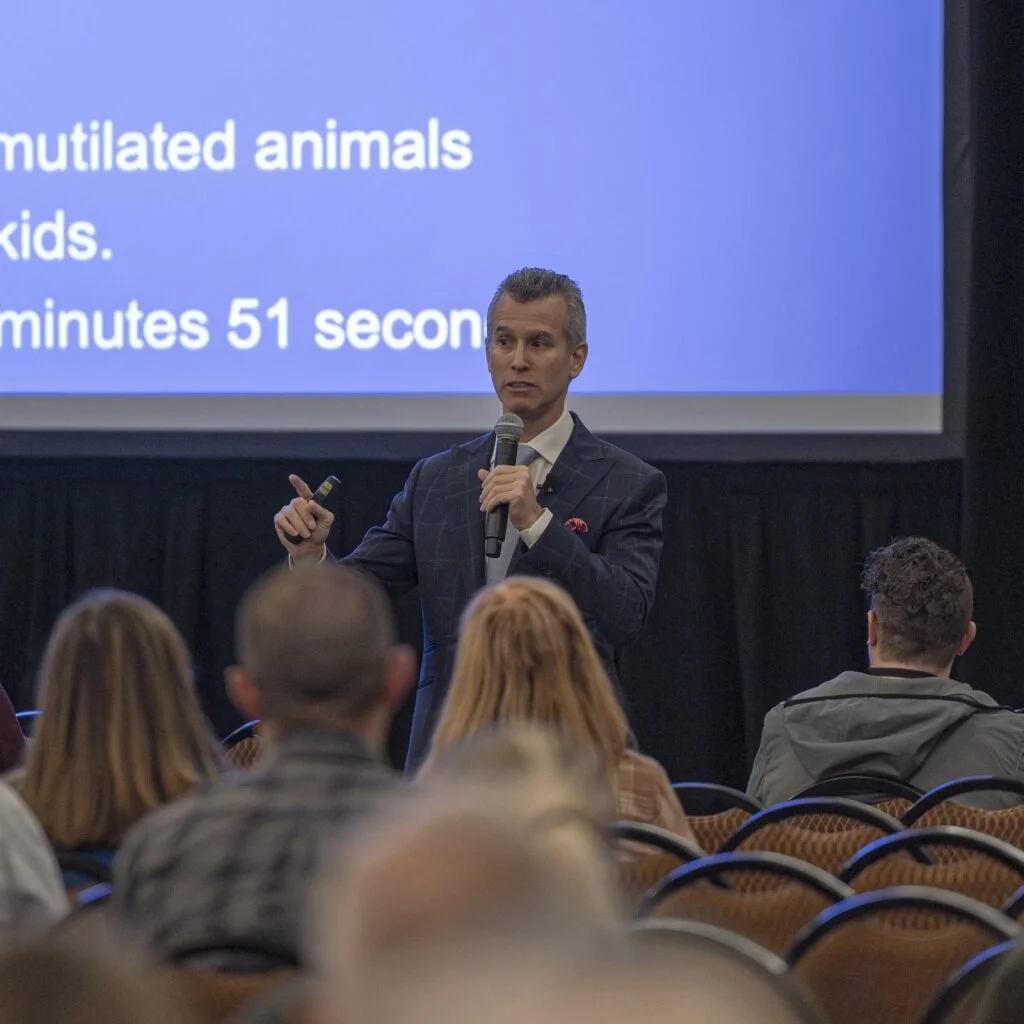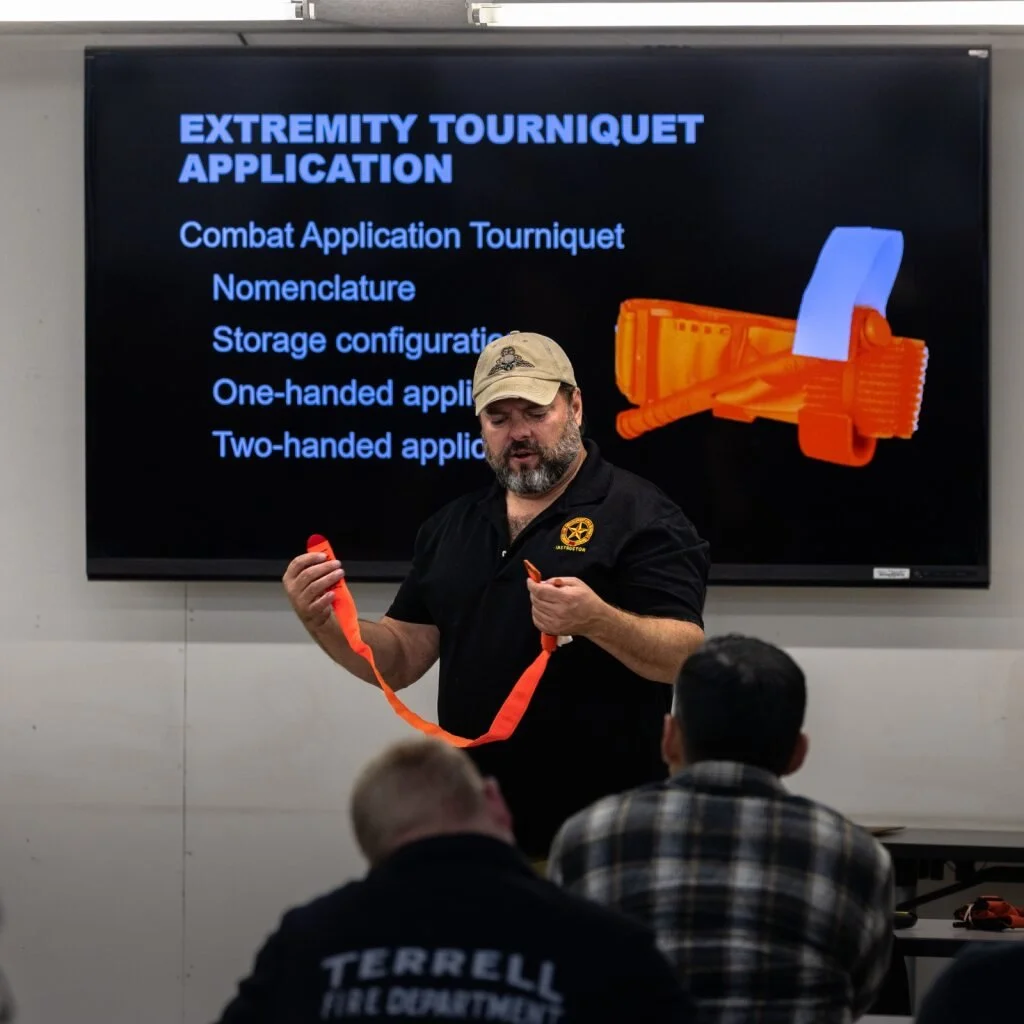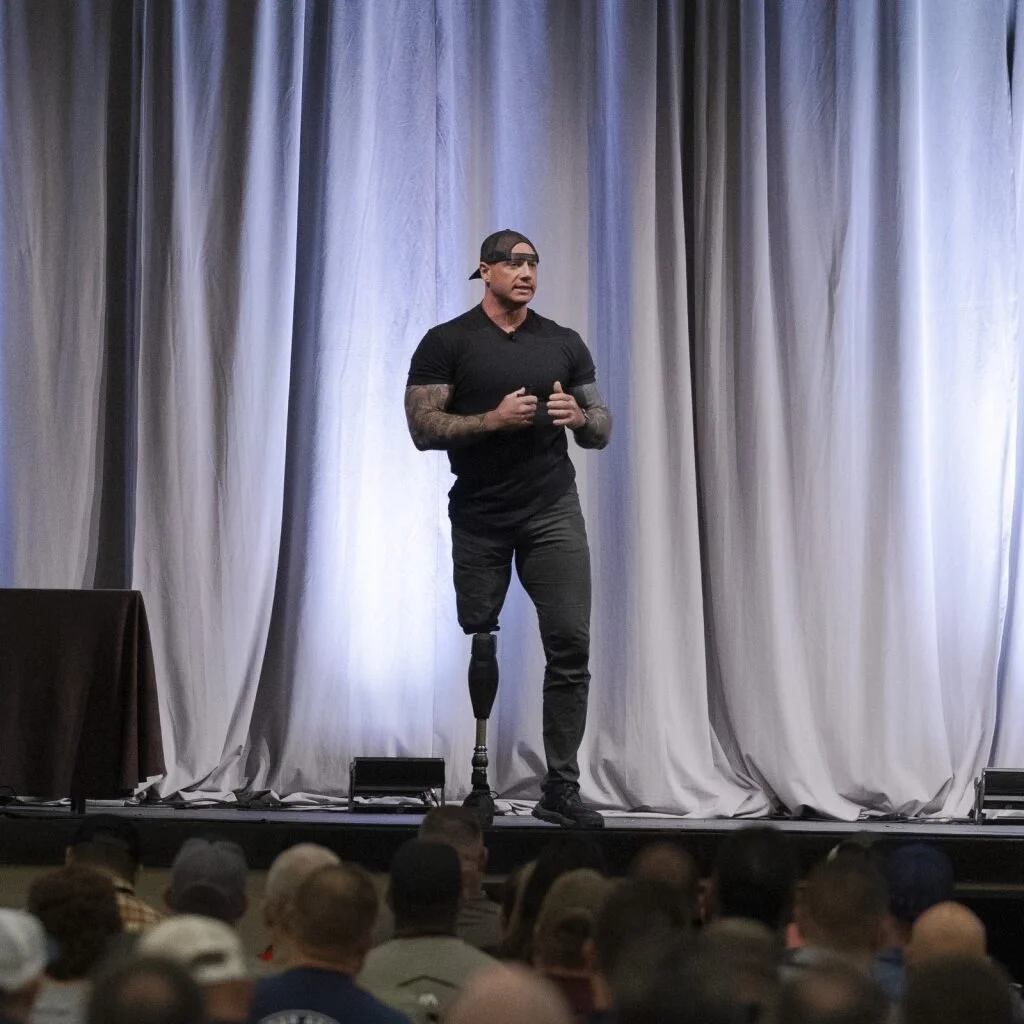See below for 2025’s session descriptions.
General Session Topics
-
Kyle Morgan, retired military member of Special Forces and member of the nation's premier counter-terrorism unit, prepares you for active threat situations with lessons on the Protector Mindset and resilient leadership.
Breakout Session Topics
-
Rob Young is a medically retired police sergeant with nearly 20 years of law enforcement experience. His story, however, begins in 1989, when he was injured as a first grader during one of the earliest mass school shootings in the U.S. In this breakout session, Rob shares his powerful full-circle journey—from survivor to public safety leader—and how he’s working to make schools safer, people more prepared, and first responders more equipped to lead in crisis.
-
This session highlights new national research shaping officer wellness, performance, and response. First, ALERRT researchers present results from a population-wide analysis of law enforcement officer mortality. The study reveals what co-morbidities are associated with officer mortality, underscoring the need for stronger wellness initiatives. Next, attendees will explore findings from a national experiment on police use of force examining perceptions of striking and grappling techniques to subdue a suspect. The final segment delivers the latest active attack data update inclusive of all active attacks from 2000 to 2024. Together, findings from these studies offer a data-driven look at the realities of policing and provide actionable insights to enhance officer safety, training, and communication with the public.
-
Retired Officer Alex Woods was one of the first responders to the 1999 Columbine High School Shooting. As a member of the Denver Police bomb squad, he remained on-scene for several days disarming numerous explosive devices - all while stepping over the bodies of the victims. Alex talks about his experience that day and the affect it had on him in the following years.
-
On December 16, 2024, an armed student shot seven classmates and a teacher at a private Christian school. This session will provide an overview of the incident and explore the aspects that first responders were able to control. By focusing on decision points before, during, and after the incident, lessons will be identified in areas including interagency training, the coordinated response, and the reunification of over 400 students with their families. Root causes for both successes and challenges will be shared, along with concrete next steps for improvement, to save lives and decrease survivor trauma at future incidents.
-
A focused review of the law enforcement response to the Perry School shooting in Dallas County, Iowa. This session covers tactical decisions, inter-agency coordination, and the impact of national media attention due to a presidential candidate's presence in town. Featuring Dallas County Sheriff, Adam Infante and DCI Special Agent in Charge Adam Decamp, the session highlights critical lessons in crisis management, public communication, operational control under intense scrutiny, and past, current, and future preparation.
-
Join two of the Loudoun County (Virginia) High Threat Team for an in-depth exploration of Warm Zone Care Models in response to Active Violence Incidents (AVIs). This presentation delves into critical statistics shaping AVI response strategies, highlighting that 98% of AVIs involve a single shooter and 37% conclude within 5 minutes, necessitating rapid transitions from threat neutralization to patient care. Learn about the phases and tactics of AVI response, including Contact Team Deployment, Incident Command, and rapid patient access. The session evaluates warm zone care strategies—Rescue Task Force, Protected Island, and Protected Corridor—drawing from real-world incidents, extensive training evolutions, and full-scale exercise evaluations. Discover how science and statistics drive faster, more effective responses, with insights from over 300 law enforcement and Fire/EMS personnel across 43 simulated scenarios. Ideal for first responders and command officers aiming to enhance interagency coordination and patient survival in high-threat environments.
-
Join Israeli Special Forces combat veteran Doron Keidar and Tier 1 YAMAM nonverbal behavior expert Sharon Artsi drawing from his three decades of military, Their 1 operating and EOD experience for a powerful and timely training session designed specifically for U.S. law enforcement and first responders. Drawing on over two decades of real-world combat experience in Gaza, Lebanon, and Samaria, Doron shares critical insights from his service in elite IDF special mobility units and his recent collaboration with U.S. Special Forces veterans post–October 7th attacks. Through real-world case studies, tactical takeaways, and interactive instruction, attendees will learn how to better identify, prepare for, and respond to modern threats, both foreign and domestic. Sharon Artsi will introduce cutting-edge nonverbal behavior analysis tools used by Israel’s top counter-terrorism units, giving officers a new edge in situational awareness, de-escalation, and threat detection. This session is ideal for law enforcement professionals seeking advanced training in counter-terrorism tactics, threat preparedness, and behavioral analysis rooted in battlefield-proven experience.
-
In this thought-provoking presentation, you will hear from leaders and subject matter experts from the disciplines of Emergency Management, Emergency Medical Services, Fire, and Law Enforcement. This multidisciplinary group will highlight local lessons-learned and demonstrate the power of perspective and how counter-intuitive actions may alter your thinking, help you to discover new assets and skillsets, and impact overall operations.
-
Investigation of the active shooting at the Mad Butcher in Fordyce Arkansas
-
This presentation highlights the current mental health trends that effect the first responder population, addresses accountability of wellness & resiliency, and provides practical therapeutic techniques and coping strategies.
-
As one of three officers to breach the door and make entry into the suspect’s room during the 1-October Massacre in 2017 in Las Vegas (the largest mass shooting incident in US history to date), Josh knows the feelings police officers are taught to feel, and the feelings he actually felt during that incident. Fear, anxiety, and uncertainty are REAL, yet seldom talked about in the law enforcement and first responder community. If we are not honest with our first responders about the reality of what their emotions will be IN the moment, they will struggle to manage those emotions not only in the moment, but the years after. Josh is passionate about his goal of “Preparing your workforce FOR the moment, IN the moment!” Because of this experience, as well as many others over the course of his career, Josh provides training for law enforcement and first responders that addresses: The intense emotions you’ll experience before, during, and after responding to a critical incident. Coping strategies (backed by data science) first responders can employ in the moment of a critical incident. Coping strategies post-incident. Ways law enforcement and first responder agencies can improve the wellness of their workforce post incident, and how agencies can minimize the impact of internal stressors on the workforce.
-
It is well known that the leading cause of preventable death in trauma is hemorrhage and the best solution is the early transfusion of blood. Despite this, less than 2% of ground EMS carry blood, due to real or perceived logistic and cost hurdles. This presentation will review best practices of successful prehospital blood programs, including deployment options, transfusion criteria, equipment, case studies, and mortality benefits. The overall goal of this presentation is to provide students with the information to start a prehospital blood program in the community they serve.
This CE activity is accredited by the Commission on Accreditation for Pre-Hospital Continuing Education (CAPCE) for 1.5 Advanced CEH.
-
This session will dive deep into the recruitment, ideology, and training currently being used by violent extremist organizations. Specifically, you will learn about how people are being radicalized online, trained in firearms and tactics through gaming, and how they admire/worship extremist active shooters. This will be given from my experience as an undercover who infiltrated these groups.
-
In a world plagued by violence and insecurity, the power of branding has taken on a sinister new form. We will delve into the intricate world of terrorist branding, exploring how extremist groups leverage imagery, symbolism, and propaganda to attract followers, sow fear, and advance their nefarious agendas. As the battle against terrorism rages on, it is imperative for leaders, policymakers, front line staff and individuals to seek a deeper understanding of the phenomenon of terrorism and terrorist branding. In addition to decoding terrorist branding, the course will educate students on the following: History of terrorism, Terror from above and below, Muslim Brotherhood, Pillars of Islam, Sharia Law, and the types of Jihads
-
Who are you training with? Are you looking at your Active Attack, Critical Incident training preparedness from a narrow lens? Have you looked to improve Casualty Outcomes from Active Attacks from a higher Level of Care being involved as quickly and safely as possible? Chief Jeff Farnsworth, Senior Advisor for Law Enforcement at the Massachusetts Executive Office of Public Safety and Security (EOPPS), and Dr. Greg Ciottone, Special Advisor for Medical Preparedness at the US National Center for Disaster Medicine and Public Health (USDMPH), will review what the State of Massachusetts has done to build a statewide critical incident response training system and the inclusion of higher levels of medical care for planning and exercises. The overall goal of this presentation is to increase preparedness for critical incidents at the prehospital and hospital level across other states, using Massachusetts as an example.
This CE activity is accredited by the Commission on Accreditation for Pre-Hospital Continuing Education (CAPCE) for 1.5 Advanced CEH.
-
Imagine this: A call comes in for an active shooter at a crowded shopping mall. Law enforcement rushes in to neutralize the threat, but where is Fire and EMS? Staged a block away, waiting for the 'scene to be safe.' Minutes tick by—precious minutes where victims are bleeding out, lives are slipping away. We train for mass casualty incidents, but are we truly prepared for the chaos of an active shooter event? Are we ready to put ourselves in harm’s way to save lives, or are we stuck in outdated policies that delay care and cost lives? Today, we’re going to confront the hard truth: Most Fire and EMS agencies are not prepared for an active shooter or active killer event. And the question is—what are we going to do about it?



